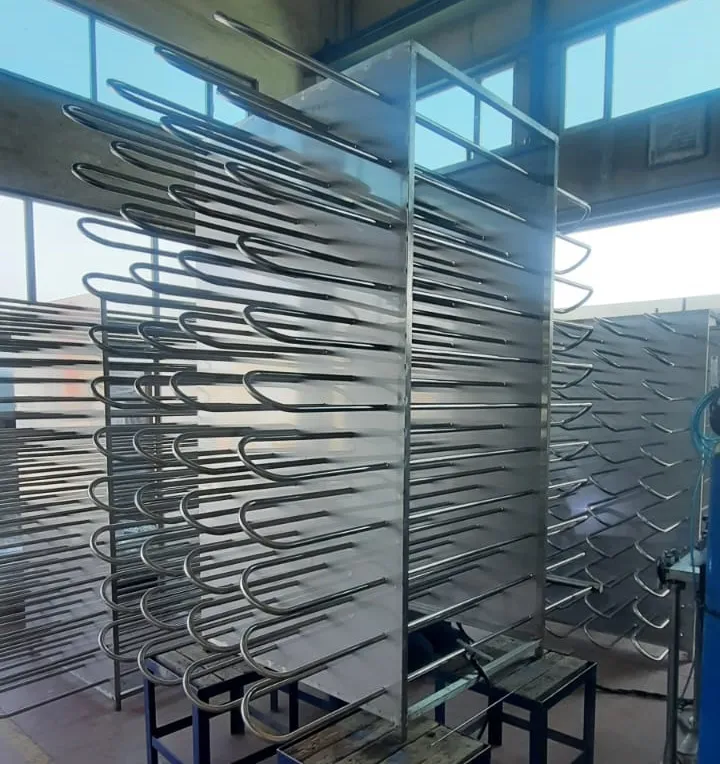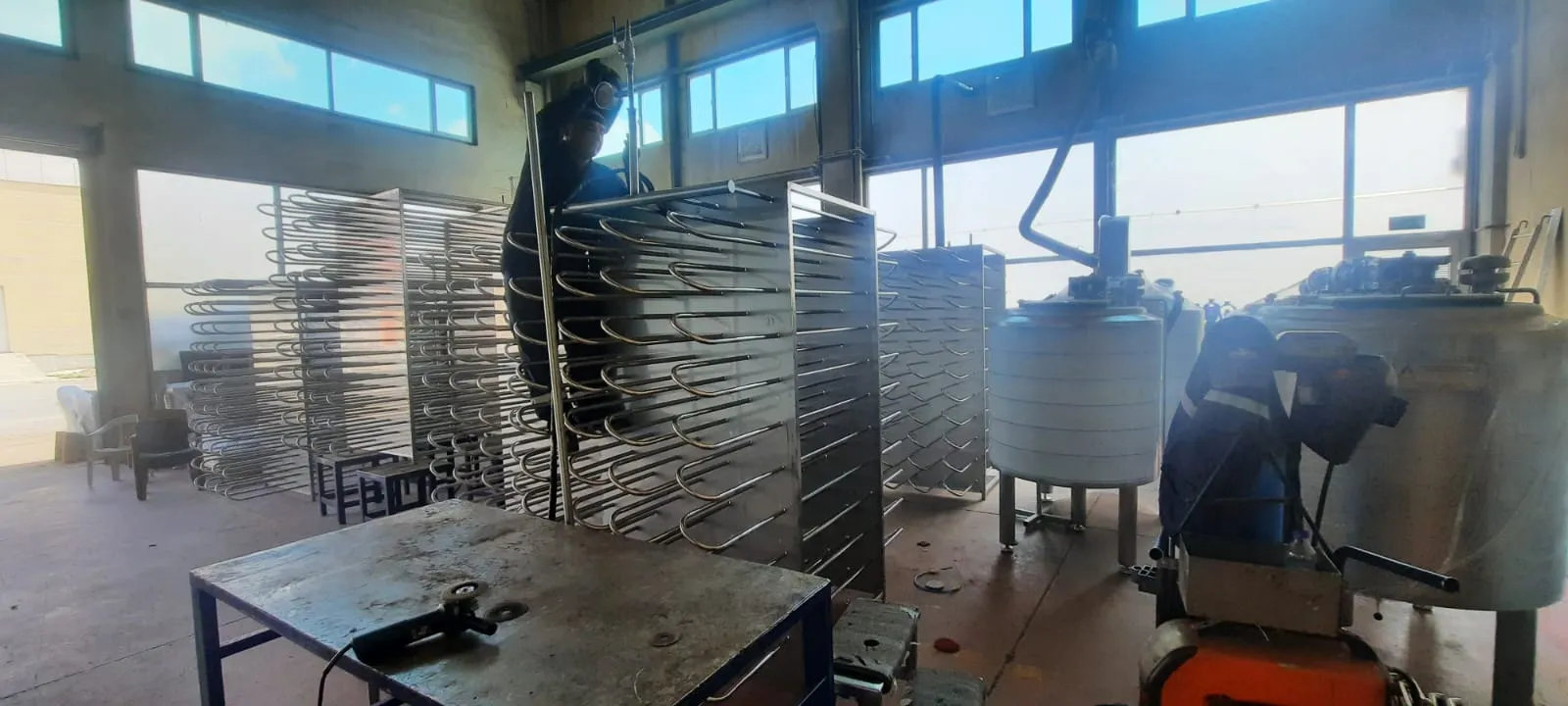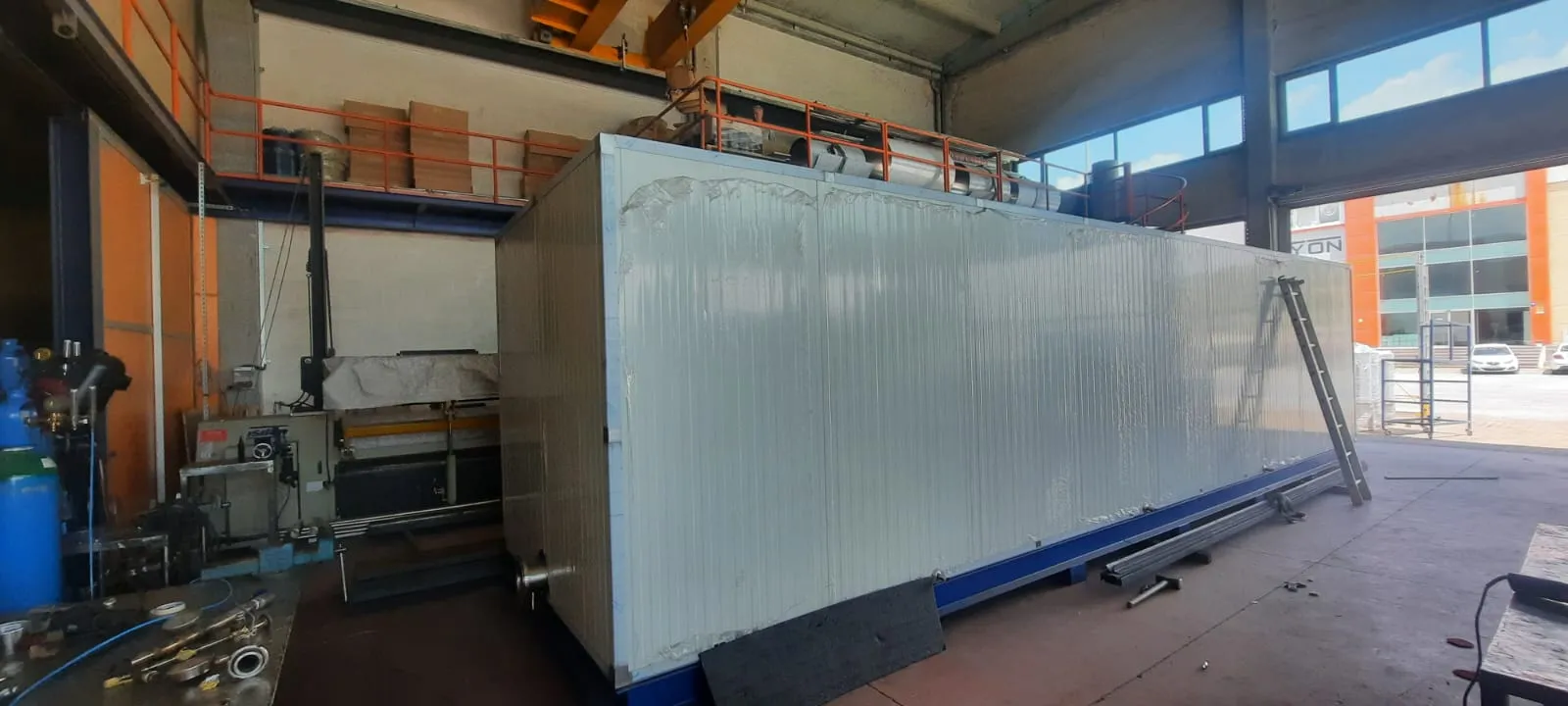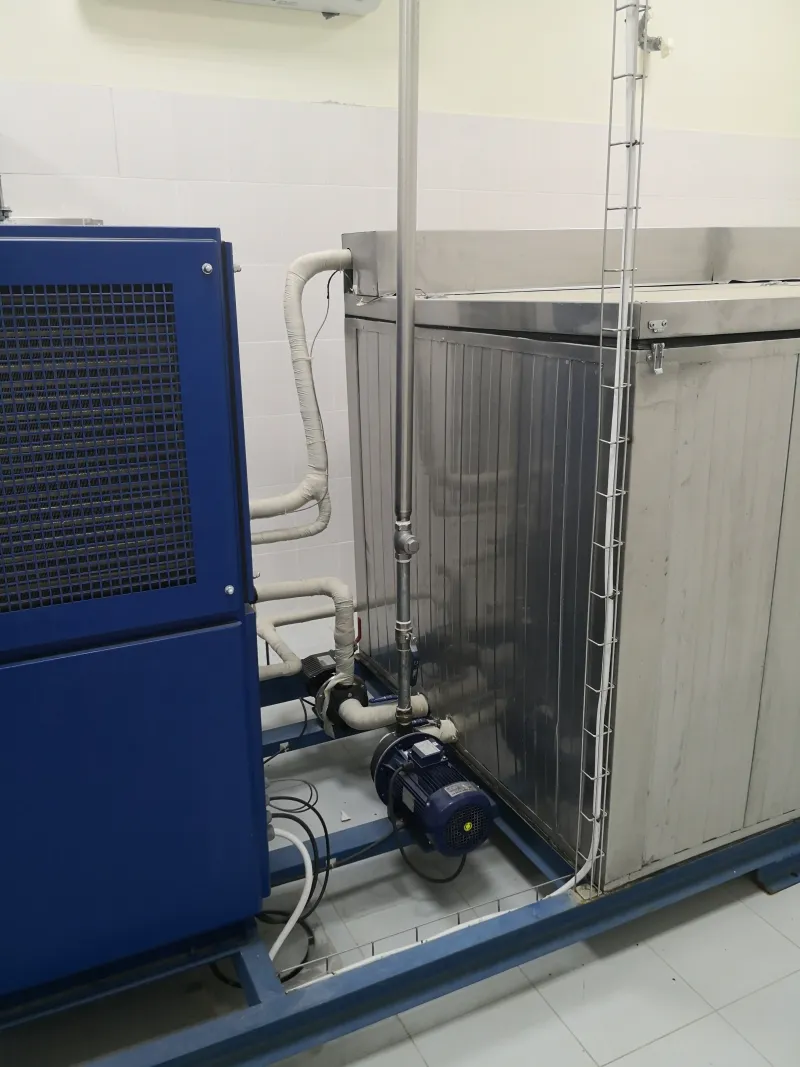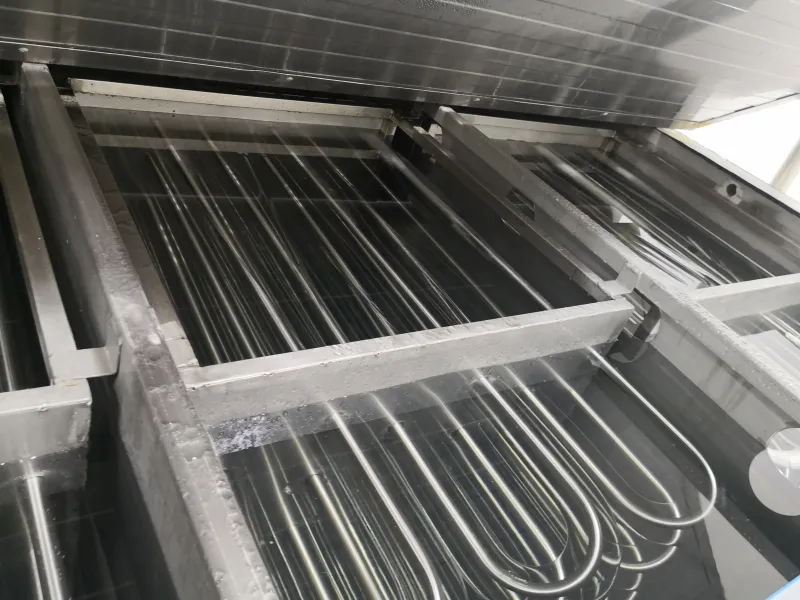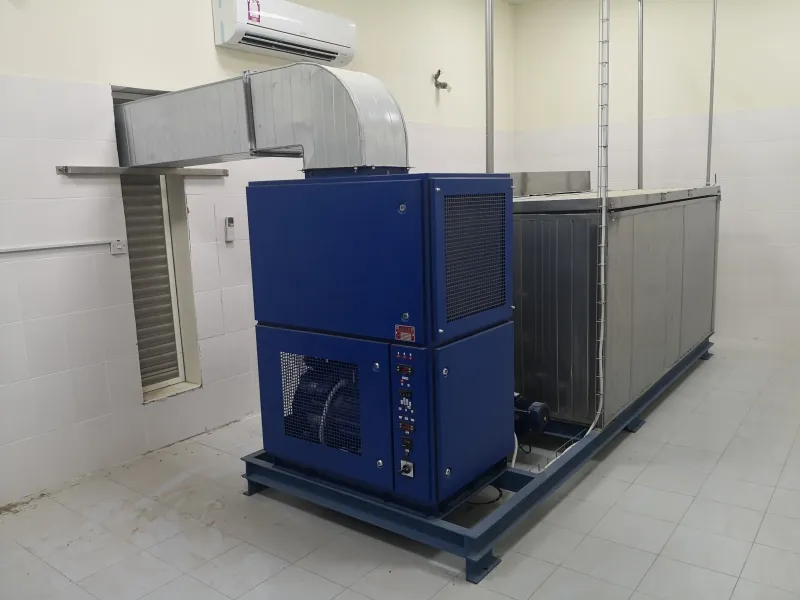Freon gas circulating in the Chiller Cooling group transfers its energy by contacting glycol in the plate evaporator. This process achieves cooling by lowering the temperature. Glycol carries energy by circulating in stainless steel tubular heat exchangers. Circulation is provided with the help of a pump, and the glycol circulates in heat exchangers made of stainless steel, forming ice with a thickness of approximately 10-12 cm in the cold water tank.
Stainless steel heat exchangers effectively store energy to form ice. Ice retains energy as long as it is stored and is released when needed. This system stores energy during periods of low demand, usually overnight, and helps reduce electricity consumption in the system by using this stored energy during peak hours of high demand.
This method is highly effective in terms of energy efficiency because it can purchase electricity cheaper at night or during periods of low demand and reduce electricity costs by using this stored energy during peak hours when it is more expensive. Additionally, this system is environmentally friendly because it uses energy more efficiently and reduces carbon emissions from fossil fuels. Therefore, ice storage systems are an attractive option for businesses looking to reduce energy costs and reduce environmental impact.
Glycol Cycle Ice Water Unit Main Equipment;
Ice water pool (all surfaces in contact with water are AISI 304 stainless steel, insulated.)
Glycol Tank
Chiller (compressors: GEA BOCK - BITZER etc.)
Ice water circulation pumps
Glycol circulation pumps
NOTE: It is possible to cool cold stores (+4'C) with the central cooling system.
To get more information and offers, info@idealproses.com



